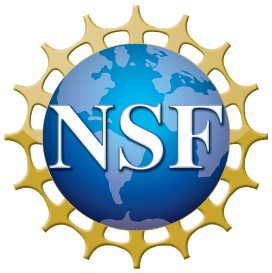About the NSF AISL Program

The National Science Foundation’s (NSF) Advancing Informal STEM Learning (AISL) program seeks to advance new approaches to and evidence-based understanding of the design and development of STEM learning opportunities for the public in informal environments; provide multiple pathways for broadening access to and engagement in STEM learning experiences; advance innovative research on and assessment of STEM learning in informal environments; and engage the public of all ages in learning STEM in informal environments. The Center for Advancement of Informal Science Education (CAISE) was an NSF-funded resource center supporting the AISL program. CAISE worked in partnership with NSF Program Directors to plan resources that can help teams develop their proposals. After their grant period ended in 2022, the Reimagining Equity and Values in Informal STEM Education (REVISE) center continues CAISE's work and is now collecting and sharing new information pertaining to AISL. View previously funded projects.
Read the current NSF AISL Program Solicitation (22-626).
Check out the 2023-2024 AISL Program Webinars and Resources and learn more about applying for funding.
Full Proposal Deadline (due by 5pm local submitter's time): January 8, 2025
Note: The AISL Program funds five types of projects: (1) Synthesis; (2) Conference; (3) Partnership Development and Planning; (4) Integrating Research and Practice; and (5) Research in Support of Wide-reaching Public Engagement with STEM. All proposal types are due on January 10, 2024.
Learn more about:
Want to Be An AISL Reviewer?
AISL is currently (and always) looking for proposal reviewers. These presentation slides help you understand what to expect. In addition, this website provides a detailed description of the merit review process. Understanding this process is central to conducting proposal reviews. If you are interested in serving as a reviewer for the AISL program, email a resume or CV, as well as a paragraph about your expertise to DRLAISL@nsf.gov. AISL asks for a paragraph about your expertise because sometimes a resume and CV doesn’t necessarily highlight your full experience. Please include your experience with informal STEM contexts and topics, age groups and communities/audiences/professionals, theories and methods in terms of practice and/or research. If you are a PI or co-PI on a Jan. 18, 2022 AISL submission, or had any direct and substantial involvement in a proposal, you have a conflict of interest and are not eligible to review this round.
Previously Funded AISL Projects
Please see the list below of AISL projects, organized by the year that they were funded. You can also use our advanced search function to sort by audience type, disciplinary content, and other tags of interest.
Other NSF Resource Centers
REVISE's efforts complements those of other NSF resource centers that serve the larger professional STEM education ecosystem. Each center has tailored resources and tools that can be used to design, implement, evaluate, research, and disseminate the work of STEM education experiences and settings. The centers include:
- CADRE (Community for Advancing Discovery Research in Education), which supports the Discovery Research K–12 (DRK–12) program (cadrek12.org)
- The recently sunsetted CIRCL (Center for Innovative Research in Cyberlearning), which supported the Cyberlearning program (circlcenter.org)
- CIRCLS (Center for Integrative Research in Computing and Learning Sciences), which supports the Research on Emerging Technologies for Teaching and Learning (RETTL) program (circls.org)
- CS for All Teachers (Computer Science for All Teachers), is a virtual community of practice that welcomes all teachers of PreK through high school who are interested in teaching computer science (csforallteachers.org)
- EvaluATE, which supports NSF’s Advanced Technological Education program (evalu-ate.org)
- STELAR (STEM Learning and Research Center), which supports the Innovative Technology Experiences for Students and Teachers (ITEST) program (stelar.edc.org)
- MSPnet (Math and Science Partnership Network), which supports the Math Science Partnership and STEM+C programs (hub.mspnet.org)
- The recently sunsetted ARC (Center for Advancing Research and Communication), which served the Research and Evaluation on Education in Science and Engineering (REESE) program (arc.uchicago.edu)
NSF's Response to COVID-19
The National Science Foundation (NSF) has created a covid-19 information page: Information from NSF on coronavirus. This page is updated frequently and includes links to the latest guidance on upcoming program deadlines, as well as budget and logistics questions pertaining to existing awards that may be affected in various ways. It is a good starting place for help in answering questions about disruptions to NSF-funded work.
NSF released additional information for the broader grantee community regarding adjustments that may be needed due to covid-19. See this guidance on NSF's implementation of the Office of Management and Budget (OMB) Memorandum (M-20-17), entitled, Administrative Relief for Recipients and Applicants of Federal Financial Assistance Directly Impacted by the Novel Coronavirus (COVID-19) due to Loss of Operations. Grantees are requested to review these documents, and bring any additional questions or concerns to their cognizant program officer. NSF encourages the research community to respond to this challenge through existing funding opportunities.